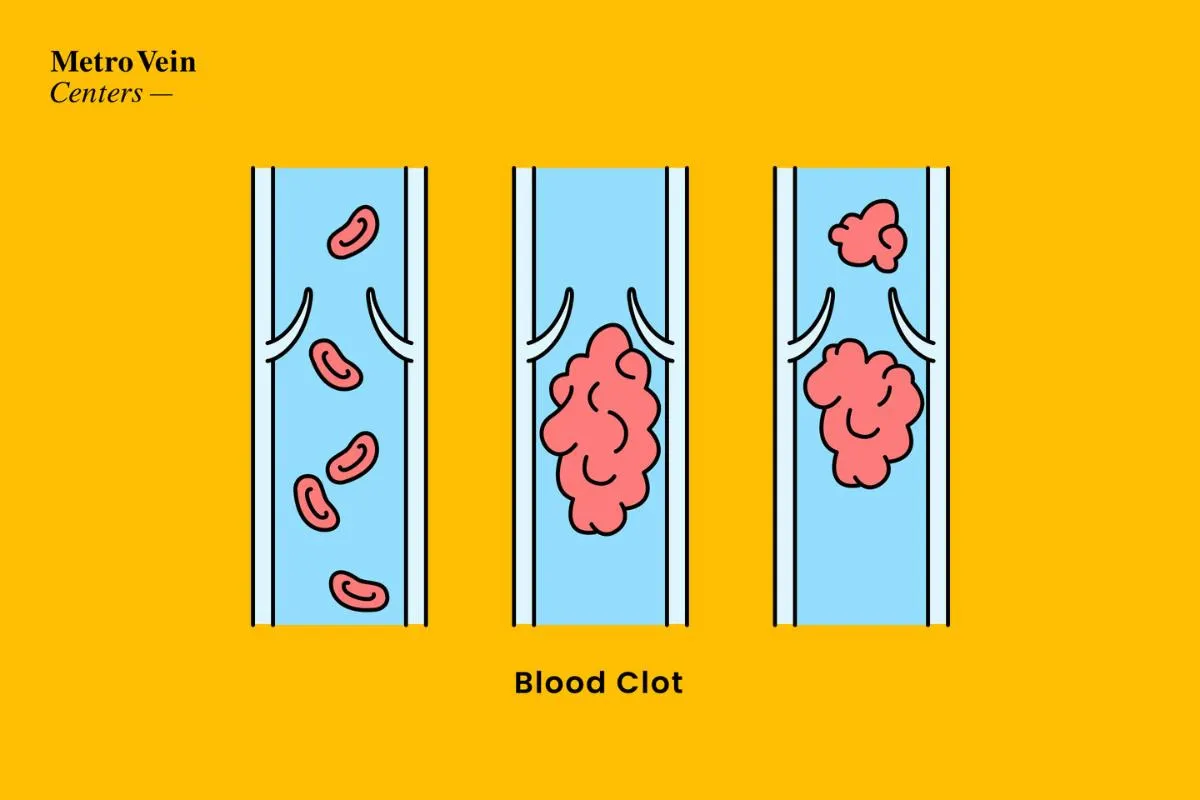Deep vein thrombosis can present with a variety of symptoms: asymmetrical swelling, skin discoloration, fever, and more. DVT can become a medical emergency quickly. If you suspect you may have DVT, stop reading and contact your primary care doctor or emergency services.
Deep vein thrombosis (or "DVT") is a complication that can be caused by late-stage venous insufficiency (aka vein disease). DVT, by definition, is when blood clots form in the deep veins of the leg, a condition that can cause a variety of painful and uncomfortable symptoms. If left untreated, blood clots in deep veins can detach from vein walls and move to the lungs, causing potentially fatal pulmonary embolisms.
Deep vein thrombosis can be treated through emergency surgery. Preventive measures can include regular use of compression stockings, by taking anticoagulant medications prescribed by your doctor, and other lifestyle adjustments.
What are the symptoms of DVT? Are there early warning signs to watch for? What can be done about DVT? Keep reading -- we've got you covered.
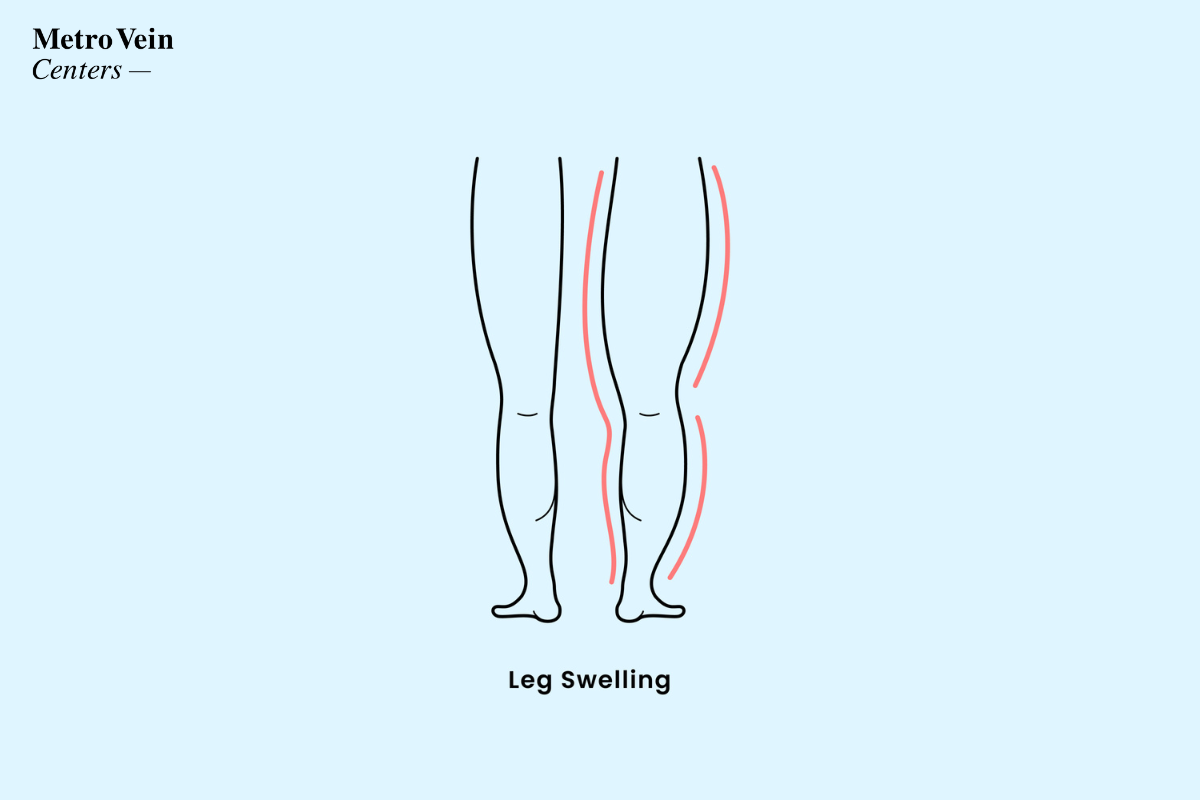
Common Symptoms of Deep Vein Thrombosis
Deep vein thrombosis has a handful of trademark symptoms that occur in the legs. Most notably, these symptoms tend to be asymmetrical (impacting only one leg), which can make them easier to spot. If you notice changes in one leg but not the other, it's time to schedule an ultrasound with your vein specialist, your primary care provider, or seek emergency care in a hospital.
Pain and tenderness
Deep vein thrombosis is often described as a throbbing pain in the thigh or calf at rest, but may be worse when walking, standing, or flexing the foot. Heaviness is often reported as well. Fatigue in the leg on or around varicose veins should not be ignored.
Leg swelling / edema
DVT can cause swelling because it blocks circulation, allowing fluid to leak through the vein walls. Swelling with DVT looks different from swelling caused by vein disease, which often impacts both legs, ankles, and calves. DVT swelling is worse in the affected leg, and skin may appear tight or feel like it is stretching uncomfortably. Compared to the unaffected leg, this swelling is visibly notable and typically does not decrease when the legs are elevated.
Skin discoloration
The affected leg often becomes discolored -- based on your skin tone, this discoloration may appear red or purple -- differently to your unaffected leg due to impaired blood flow. Discoloration is more common in the lower leg (calf) or the thigh and may cause itching sensations similar to a rash.
Skin that is unusually warm
If you notice any visible differences in your legs, you may also experience temperature differences. DVT can cause skin on the affected leg to feel warm, even hot to the touch, and it may cause affected areas to feel warmer than other parts of the same leg! If your calf is swollen, reddened, and usually warm on or around varicose veins (or even without visible veins), it's time to contact your doctor.
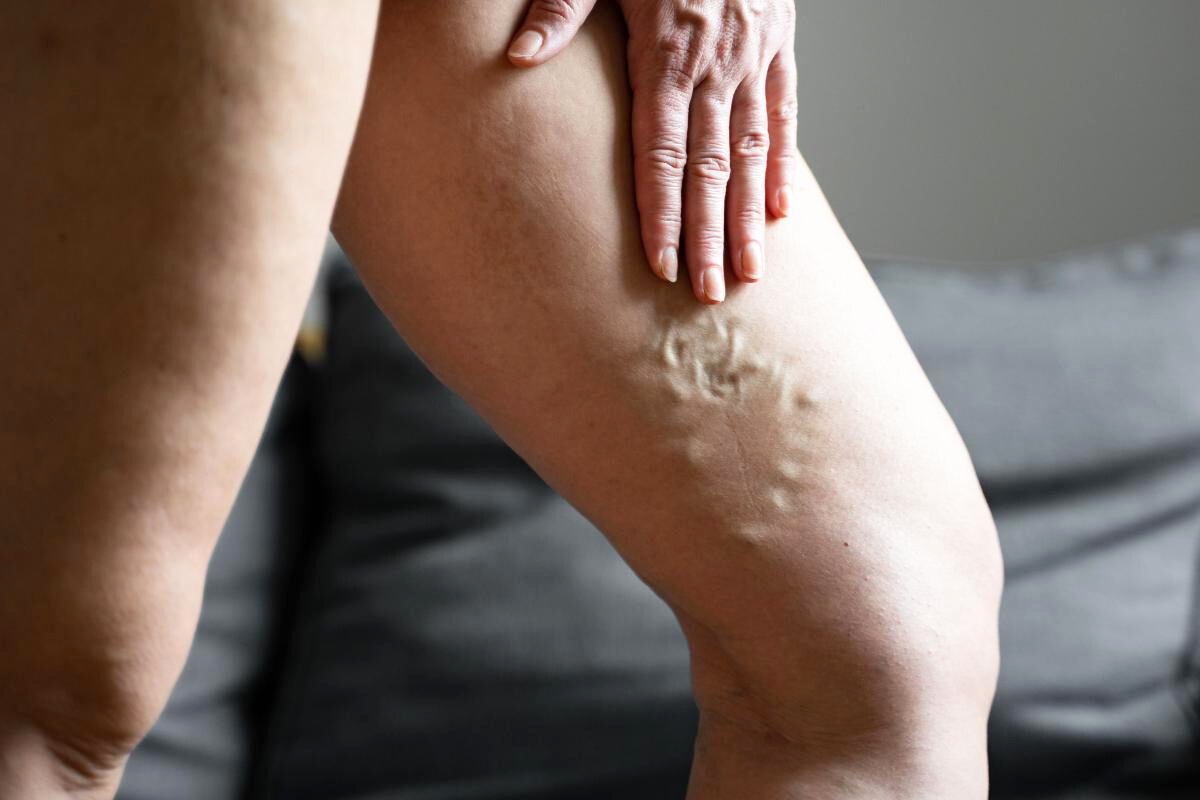
Sneakier symptoms
Although we wish all symptoms were as glaringly obvious as a visibly swollen leg or change in skin tone, DVT can also fly under the radar with lesser symptoms. These symptoms may be the first warning signs, or they may be the only warning signs your body provides to let you know something is wrong with your veins. Keep an eye out, especially if you've previously been diagnosed with varicose veins or vein disease!
These following symptoms are remarkably similar to the symptoms of varicose veins. If you haven't previously been diagnosed with vein disease, come in for a vein evaluation and an ultrasound with a vein specialist near you.
Visible surface veins
As is common with moderate to severe vein disease, the presence of varicose veins and spider veins may be visible on the surface of the skin. Typically affecting the legs, varicose veins are characterized by their ropey, geographic appearance. These may be bumpy and cause pain. Spider veins are flat, thin, and colorful, and often behind the knee, around the ankle, and on the foot. Spider veins should not cause pain, but might cause a light itching sensation.
Fatigue or unexplained tiredness in the legs
If your legs feel heavy after a day of standing or activity, if you feel heaviness like your legs are waterlogged, or if you simply find your legs are exhausted after light activity, this might be a sign of deep vein thrombosis.
Low-grade fever
Because DVT causes inflammation of the veins, some patients run a slight fever. This is not always indicative of deep vein thrombosis, as fever can be caused by unaffiliated infections, illnesses, or reactions to medications. If paired with other concerning symptoms, a mild fever might be a sign from your body that something is not quite right!
If you experience any of these symptoms, seek emergency care immediately or call emergency services. Pulmonary embolism can be fatal if not addressed by medical professionals quickly.
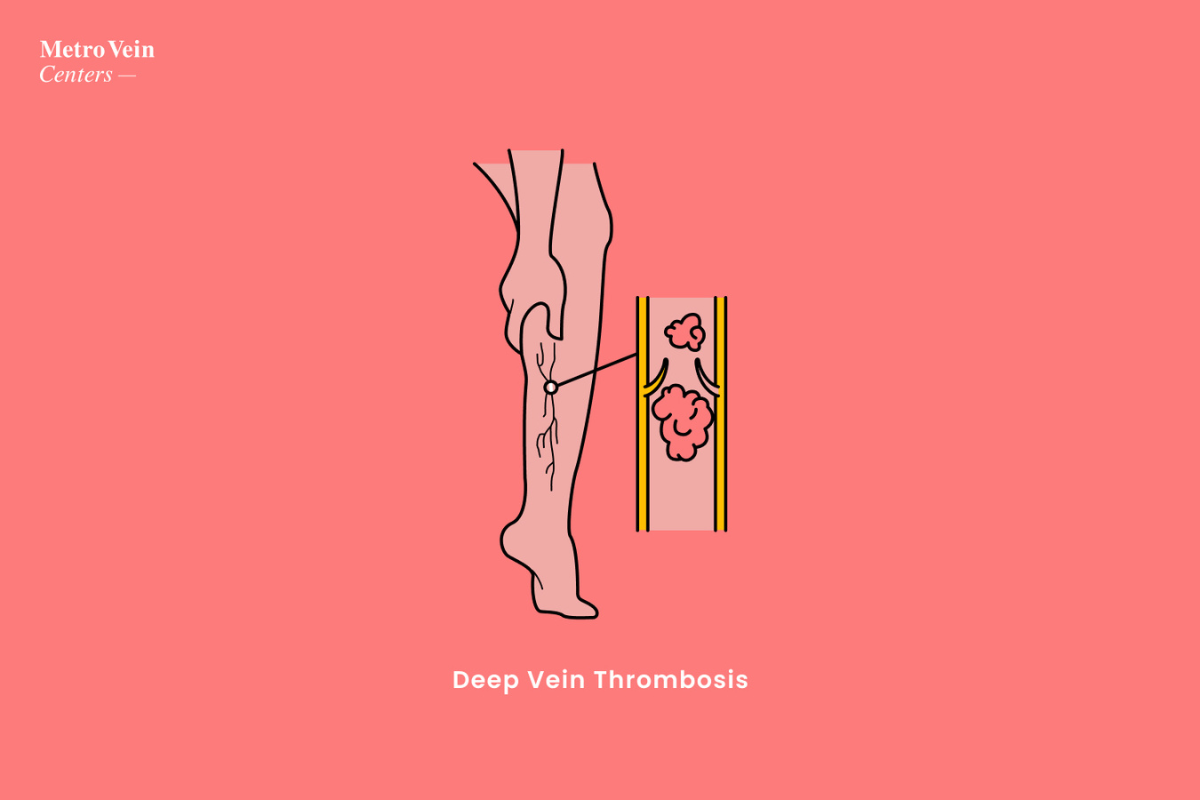
Risk Factors for Developing DVT
DVT can be caused by a variety of factors -- some avoidable and some unavoidable.
- Age
- Pre-existing medical conditions that affect circulation
- Recent surgery or injury
- Prolonged periods of immobility
- Certain medications
- History of blood clots
- Family history of vein disease
Proactive and preventive vein care, such as treatment for varicose veins and addressing painful or uncomfortable symptoms as they appear, can help prevent DVT. Preventing deep vein thrombosis is possible through lifestyle changes (such as quitting smoking and keeping active through low-impact exercises) or by seeking professional medical assistance. Early detection can be a lifesaving measure when it comes to DVT!
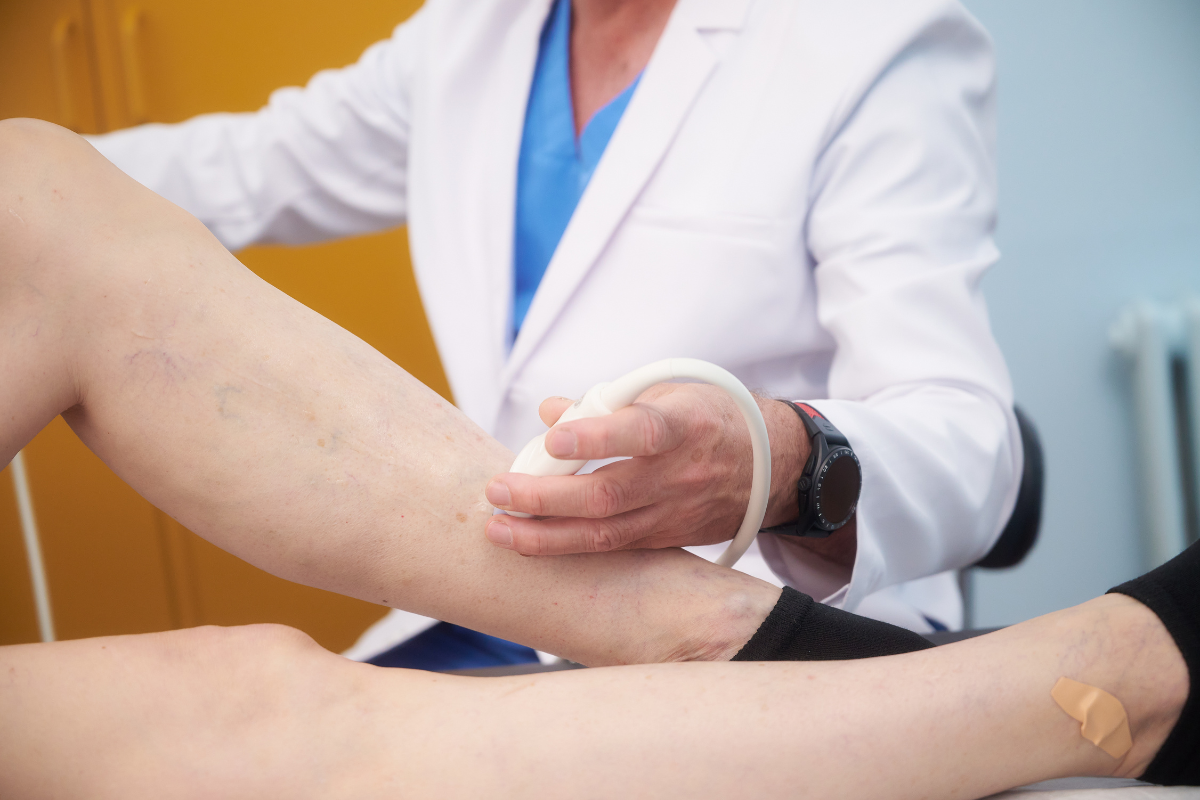
When DVT escalates to pulmonary embolism
Not everyone with varicose veins will develop DVT, and not everyone with DVT will suffer a pulmonary embolism. These conditions, whether vein disease or deep vein thrombosis, are highly treatable through minimally invasive vein treatments or medications. However, if you weren't aware that varicose veins in the legs can pose health risks, or if you've postponed medical intervention from a board-certified vein doctor, DVT may escalate to more dangerous conditions such as pulmonary embolism.
The initial warning signs of pulmonary embolism include shortness of breath (often occurring suddenly and without obvious cause), chest pain in the center of the chest (also reported as a feeling of "fullness"), an increase in pulse or rapid heartbeat, and in very concerning cases, coughing up blood.
Because of the high risk of this condition, we recommend seeking emergency care from hospital staff if you have confirmed the presence of deep vein thrombosis. Although vein doctors can rule out DVT in our vein clinics via ultrasound, we do not treat this condition in our clinics. Addressing this potentially dangerous condition may require more extensive surgical intervention than the minimally invasive vein treatments offered in our vein clinics.
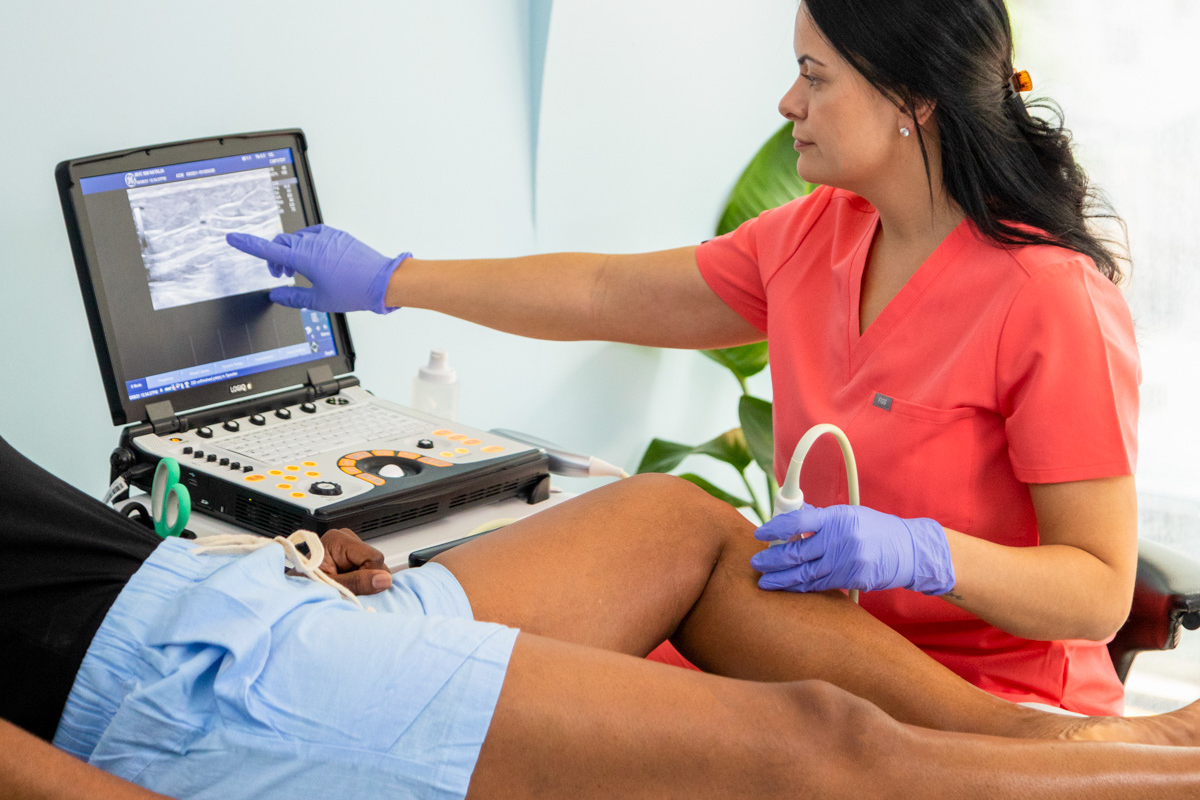
Preventing DVT: Your first steps
DVT does not appear suddenly. It is often the result of unchecked and untreated varicose veins or vein disease in the legs. If you experience...
- Bulging, twisted varicose veins
- Abnormal fatigue in the legs
- Swelling of the ankles or calves
- A family history of vein disease
... the best first step in avoiding DVT is to seek out a vein specialist near you.
We offer free vein evaluations with eligible insurance plans. (We accept over 200+ insurance plans!) Varicose vein treatments are often covered by insurance as a medical concern (partially because varicose veins can lead to DVT). Meeting with a board-certified vein specialist and pursuing an ultrasound evaluation can diagnose or rule out DVT in as little as one hour.
Being proactive with your vein health and seeking medical attention when you notice changes in your legs is crucial. Whether typical symptoms of vein disease like tingling, aching, or edema, or severe, asymmetrical changes in your legs such as skin discoloration, skin tightening, or temperature changes, medical intervention can address dangerous chances of DVT and improve your quality of life... or even save it.
We offer a variety of minimally invasive vein treatments in our New York, New Jersey, Connecticut, Michigan, Pennsylvania, Texas, and Arizona vein clinics. We also offer ultrasound evaluations, where our team of vein specialists can investigate your veins for signs of venous insufficiency, blood clots, and DVT. Give us a call at 866-353-5124. We're happy to help!

Dr. Philip LoPresti
Meet Dr. Philip LoPresti DO, DABVLM, FACS, a board-certified vein specialist and surgeon with over 20 years of experience. Schedule an appointment with him in Queens, NY today.
Meet Dr. Philip LoPresti
Trusted insight from the nationally accredited, board-certified vein doctors at Metro Vein Centers.


